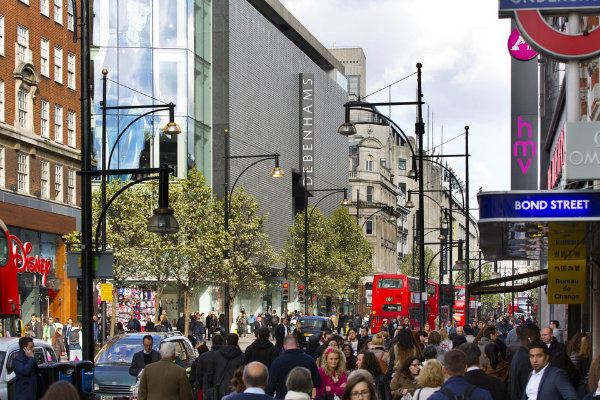July was a good month for the UK‘s high streets a slip in footfall rates and town centre vacancies increasing, according to new data.
The Footfall and Vacancies Monitor from the British Retail Consortium (BRC) and research firm Springboard, released today, indicates that good weather and sales campaigns gave high streets a 0.3 per cent year-on-year uptick in July footfall compared to the 3.7 per cent drop that occurred in June.
However, footfall across the whole retail sector was down by 0.4 per cent for that same period – with shopping centres and retail parks experiencing declines of two and 0.3 per cent respectively.
In addition, the monitor found that 10.1 per cent of town centre shops were vacant for the quarterly period ending July 30, the highest vacancy rate since April 2015.
Springboard marketing and insights director Diane Wehrle said the economic fallout from the UK‘s vote to the leave the EU may have played a part in the high street‘s performance.
Click here to sign up to Retail Gazette’s free daily email newsletter
“Some high streets in London and other major cities saw the changes in exchange rates produce increased spend from overseas visitors, who could get incredible value with seasonal sales and strong exchange rates providing an unbeatable shopping offer,” she said.
Meanwhile, the BRC expressed concern at the rise in vacancies in town centres.
“The increase in the number of empty shops is an unwelcome reminder of the heavy burden of property costs,” chief executive Helen Dickinson said.
“After a long run of shop vacancies being below 10 percent, seeing them rise over that threshold once again will be a bitter disappointment to many.”
She added: “With UK property taxes higher than anywhere else in the developed world they act as a disincentive to operate physical space.
“Today‘s figures should serve as a wake-up call.
“If property costs in general, and business rates in particular, continue ever upwards, we should all be concerned about the impact on our local communities up and down the country.”
Wehrle said the high vacancy rate could be attributed to the closure of post-Christmas pop-ups and how post-Brexit “political and economic uncertainty” may have deterred retailers from signing store leases.
“The next quarter‘s figures will be the ones to watch to get a clear picture on any continued increase in vacancy rates, which would be concerning for town centres across the UK,” she said.
Click here to sign up to Retail Gazette’s free daily email newsletter


















